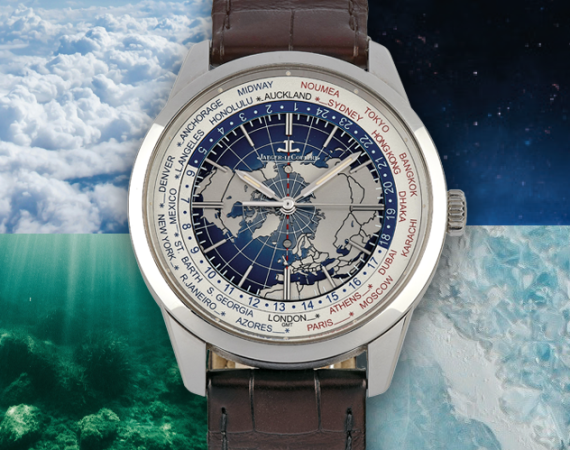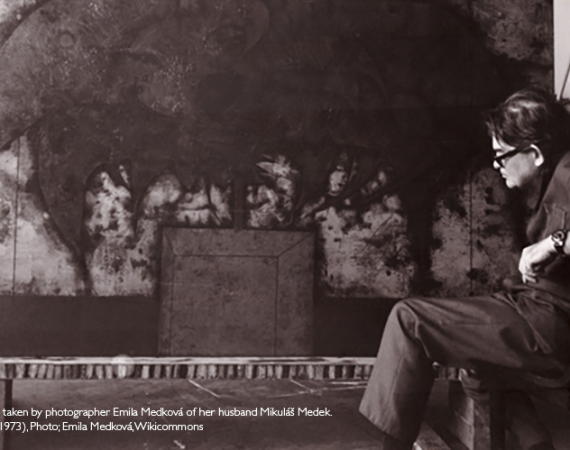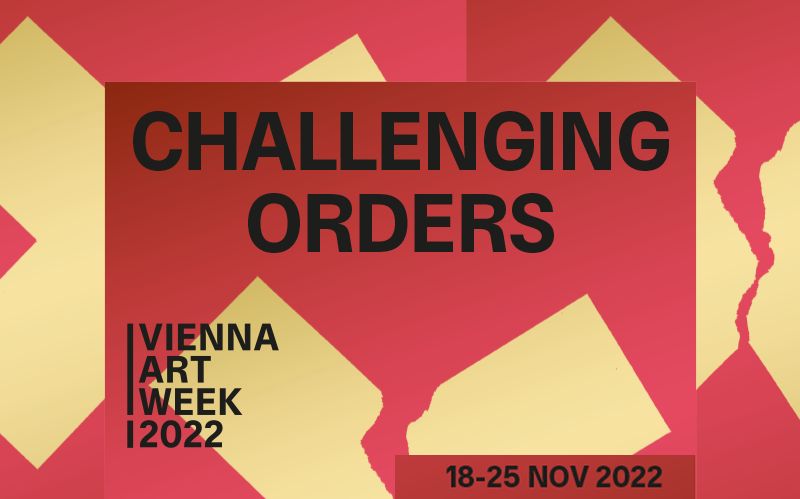
FALLING FOR IT
Artists will once again open up their studios during the Open Studio Days at Vienna Art Week 2022. Journalist, Amira Ben Saoud visited artists Rafael Lippuner, Julia Haugeneder and Christiane Peschek for Dorotheum MyART MAGAZINE to discuss their interpretations of this year’s motto, Challenging Orders, and to talk about humour, material and identity. These three artists produce very different work, but they do have something in common: things are not always what they first appear.
“When I met Rafael Lippuner at his studio, which is housed in das weisse haus in Vienna’s first district, I put my foot in it with my opening lines: “As I understand your work, a lot of it consists of interventions in public spaces. And the work you do is also a little funny.” He responded with a grin: “‘He is funny’ is my boss fight, I hear it a lot, and I guess I have to live with that.” The Swiss artist, who graduated in 2019 from the University of Applied Arts, Vienna, is actually interested in something else. To be precise: his work can be funny, but his focus is on other topics.
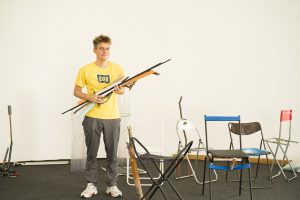
This quickly became clear when Lippuner started to set up a small army of heavily dysfunctional home-made chairs for our photographer, though “dysfunctional” is actually the wrong word. You can’t sit on them; if you do, they quickly collapse in one way or another, or get up to some other sophisticated fuss. Which is not to say that they have no function. Quite the reverse, in fact: The Chairs are practical works in Lippuner’s Setups series. These Setups are installative interventions that he designs for various environments – from public spaces to institutional settings. His work entitled In der Mitte der Gesellschaft (in the middle of society) is particularly exciting: how do people react when they unexpectedly encounter such an object while going for a walk? Do they with it? Do they recognise it as art, and what does it mean if they do? Does it only become art through their interaction with it? It’s about coincidence and expectations, curiosity, and misunderstandings. Either way, Challenging Orders, the motto of this year’s Vienna Art Week, matches Lippuner’s very own way of working. “I think it’s exciting how order manifests on a material level, for example in dimensions. Stairwells, doors and chairs are only ever conceived to be functional. When you question that, you begin to ‘challenge the order’.”
DECEPTIVE SURFACE
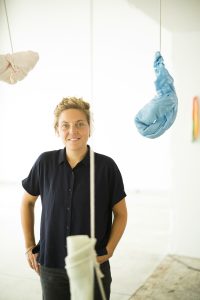
While Lippuner mainly works with found materials, which he appropriates and examines for potential, Julia Haugeneder, who recently moved to a new studio in the 15th district, focuses on material in a completely different way. The Viennese artist originally studied printmaking, but then she discovered bookbinding glue and became an object artist. Which answers the first question that occurs to observers when they encounter her objects: “What is it made of?”
Instead of using the glue to do something obvious, like gluing something, Haugeneder challenges standards in her use of adhesive. She adds pigments to the transparent glue, pours it on the ground, and then, once it is hard enough, starts to fold it. The two-dimensional surface area is up to ten times larger than the three-dimensional objects she creates, and which Haugeneder calls Faltungen ( folds). They allow for a range of different associations, depending on the exhibition context: oversize cakes or sushi, messenger bags or colourful parcels. They are, however, always mysterious and charming. “I only ever worked ‘flat’. Creating a spatial object with such a simple gesture and virtually making her own material was intriguing to the artist. “We arrange the world in some way. The act of arranging is very present in the act of folding.” But Haugeneder does not associate the term Challenging Orders with her unusual choice of material, or the subversive type of order she creates through folding. Rather, she believes the challenge is to expand the practice for which she is known. Folds have almost become the standard for Haugeneder, whose work already features at various museums, and now she is pondering how she can develop and enhance her technique. She has begun to create small works out of wax, working with a natural, valuable material instead of a synthetically manufactured and cheap one. Visitors will be able to watch her work during the Open Studio Days.
PERFORMING ROLES

Christiane Peschek’s materials could not be more different from plastic, but her works also refuse to reveal immediately what – or whom – they represent. They are photographic portraits of women (and maybe the occasional man?), the focus so soft that they become unidentifiable; some are cute and somehow fetishizing, while others are grotesque and scary. There is a lot you can say about this lack of focus alone, about the aesthetics and the materials, such as silk, on which these pictures are printed. But the most important clue is still missing: Christiane Peschek’s material is she herself. All these very different people in her pictures are Peschek!
A bit like Haugeneder, who came across glue by chance, Peschek discovered her method by accident: when she dropped her camera in 2013, she started using her mobile phone instead of professional photo equipment. In her image folder she discovered herself, or rather, pictures of herself. Inspired by apps that allow users to optimise their appearance with a few clicks, Peschek, who has a background in advertising, started to edit the pictures with the traditional Photoshop tools used for retouching: Healing Brush, Stamp Filter, Soft Focus. Instead of just making putative improvements, she uses these tools hundreds of times until only aura-like indistinct shrouds of faces remain. The Instagram algorithm is unable to identify this indefinable softness. It does not perceive the images as portraits, even though they contain the essence of certain types of people and their self-presentation on the platform. “Editing allows me to acquire identities or forms of myself that my physical body simply cannot provide. I pay a lot of attention to Instagram trends and observe which roles are performed there, what kind of image is conveyed”, says Peschek. Playing with identity is central to her work. She also takes up current discussions about acceptable forms of appropriation. Who are we allowed to be, and who are we allowed to turn ourselves into? Her images strike a narrow and exciting balance between affirmation of, or fascination for, specific role models, and criticism of those models. As well as challenging order in the sense of a border between the self and the other, she challenges the observer, who is forced to react to this art in some way. Because you can’t look away.
Amira Ben Saoud is a culture editor at the Austrian daily newspaper “Der Standard”.



